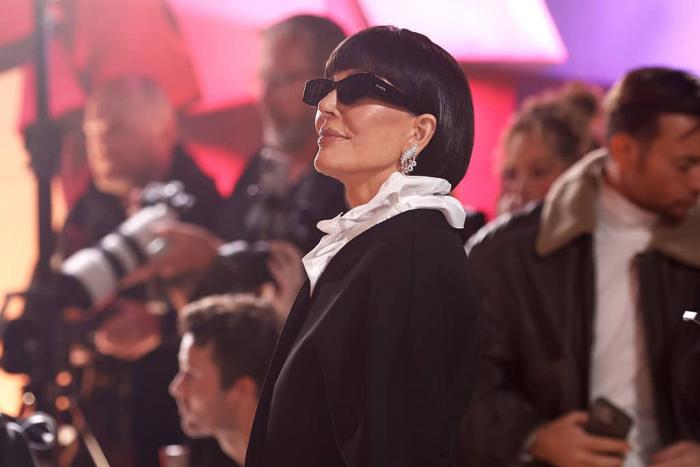By Kayleigh Donaldson | Celebrity | November 6, 2025

Move aside, fillers and Botox. There’s a new treatment in town, and it’s a familiar face with a bit of tightening. Yup, the facelift is back in style. It’s not just for ageing socialites anymore. Once seen as too scary and unreliable for most, the facelift has experienced a massive PR boost thanks to the likes of Kris Jenner and Marc Jacobs. Not only did they turn up in public looking incredible, but they made no secret of the fact that they’d gone under the knife. It’s a far cry from only a few years ago, when many a star claimed they’d never even gotten a hint of Botox despite having foreheads smoother than a baby’s backside. Now, it’s cool to brag about your procedures, to name-drop your surgeons, and to let everyone know you have the money to roll back time more effectively than ever.
For a long time, the facelift was rejected in favour of less invasive procedures, ones that focused on specific parts rather than the whole. The idea of having your skin sliced up and pulled back so thoroughly felt drastic and increasingly not worth it. Certainly, there were those more infamous examples where people could see the scar tissue behind the ears or wondered if their eyes had been too tightly strained for them to be able to see properly. Facelifts were synonymous with older people, usually women, and for being the last option available. You went to the surgeon for the full job when everything else failed you.
Now, not only are facelifts back, but they’re happening at younger and younger ages. A recent article by The Guardian, ‘a survey by the American Academy of Facial Plastic and Reconstructive Surgery found that the portion of younger facelift patients is growing, with 32% of facelifts now performed on patients aged 35-55.’ We know how fillers have been marketed to people, especially women, in their early 20s as ‘preventative wrinkle treatment’, a way to prep the skin before smile lines even think of forming. In the UK, your filler tech doesn’t need to be a qualified doctor or nurse as long as they’ve taken a quick course, which has led to accusations of a nationwide plague of shoddy and unregulated work. So many influencers include collagen top-ups as part of their daily routines. A lot of young people have been taught to fear ageing so thoroughly that they see fillers and non-surgical treatments as casually as a trip to the dentist.
And surgery has only grown more prominent throughout this period. It’s more common than ever for people to go abroad for cheaper and more accessible operations, in places like Turkey, Mexico, and Costa Rica. Influencers have done sponcon for various clinics, while others have documented their treatments with the lackadaisical warmth of a casual summer holiday. It’s hilariously common on my side of the pond to hear about people going to Turkey to get a whole new face and body (and blindingly white teeth.) Many clinics offer special package deals with layaway payment plans, selling their wares through targeted social media marketing.
As that article by The Guardian noted, ‘the procedure is no longer being used for the express purpose of anti-ageing - or rejuvenation, as the aesthetics industry terms it - but for “beautification” and facial restructuring, too.’ That’s why younger patients are being drawn in. The grand promises of fillers and veneers and whatever the fad of the moment was two weeks ago faded away very quickly. So-called filler fatigue has been cited as one reason for the facelift’s revival. Promises that a little injection here or there would keep you looking youthful have backfired spectacularly, with many patients fearing they look older than their ages and too puffy because of the substances used. We’re also far more aware of the dangers of these supposedly safe fillers. Not all of them are dissolvable, and many build up under the skin or migrate to other parts of the face, causing ‘pillow face’. Nobody wants accidental Mar-a-Lago Face.
There doesn’t seem to be any benefit to getting a half- or full facelift in your 30s unless you had serious health issues to begin with. This is a major procedure that requires a lot of recovery time and requires an immensely skilled surgeon. There’s a serious chance you could die on the operating table. As with all stories of augmentations and beauty trends, I find myself feeling super depressed. Everyone can and should do whatever the hell they want with their bodies but isn’t it sad that the new norm is one where a facelift is seen as a must for a 29-year-old? It was disheartening enough when BBLs were everywhere and we were supposed to just overlook the fact that it’s a surgery with a shockingly high rate of fatality.
Surgery is never a one-and-done thing. This was the trap with fillers: you have to keep getting them done, and filler blindness leaves you feeling like you need to add just a few millilitres more each time until one day you don’t look like yourself and you don’t even look young. You just end up looking like someone with a lot of fillers. One of the reasons the facelift was sidelined was that it required regular maintenance and increasingly invasive additions. There are only so many times you can pull that skin back before you run out or turn into that one character in Doctor Who. And what follows this when the facelift once again falls out of fashion? Will a new, even scarier and needless operation become TikTok’s latest obsession and one marketed to teens?